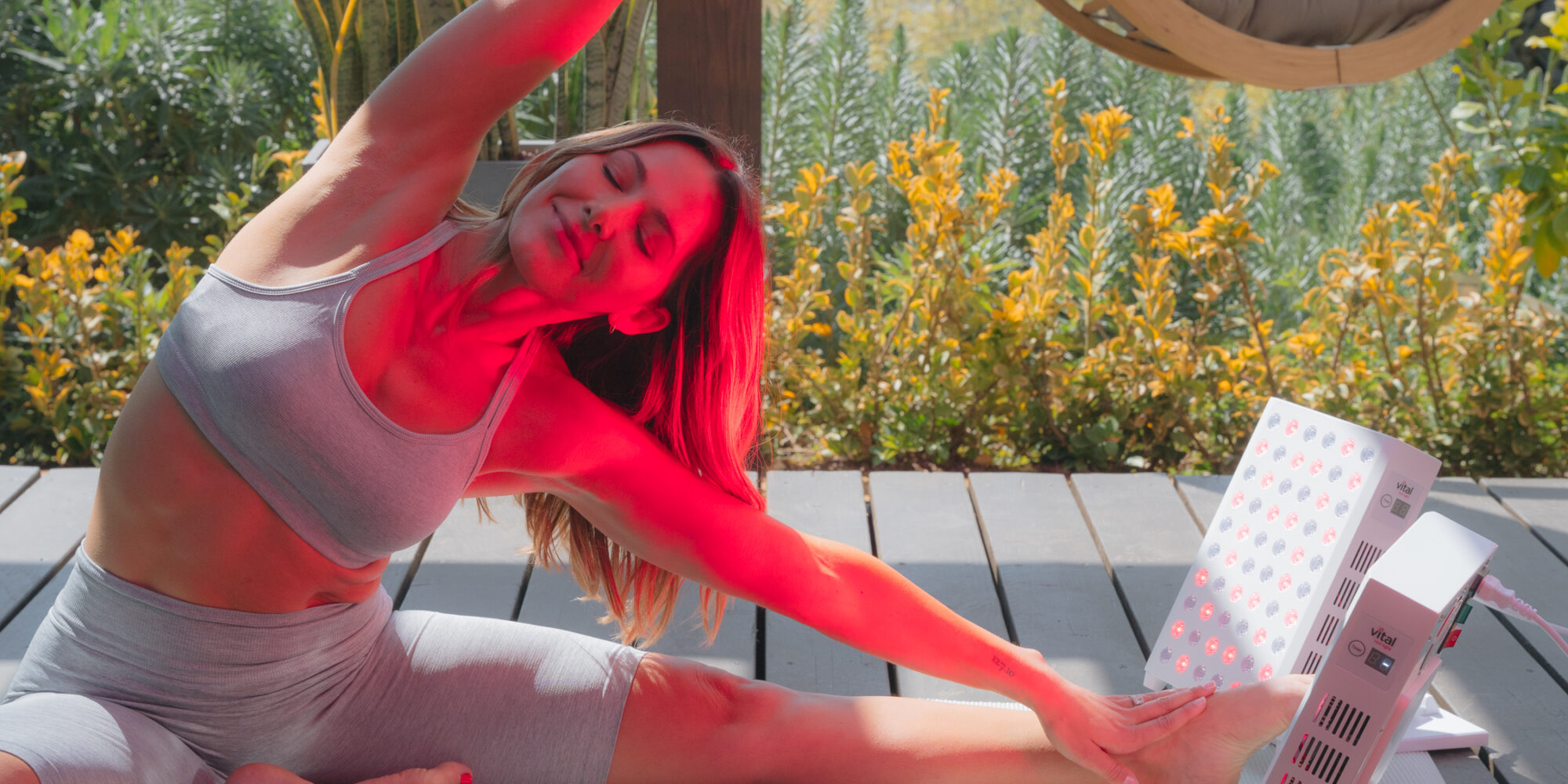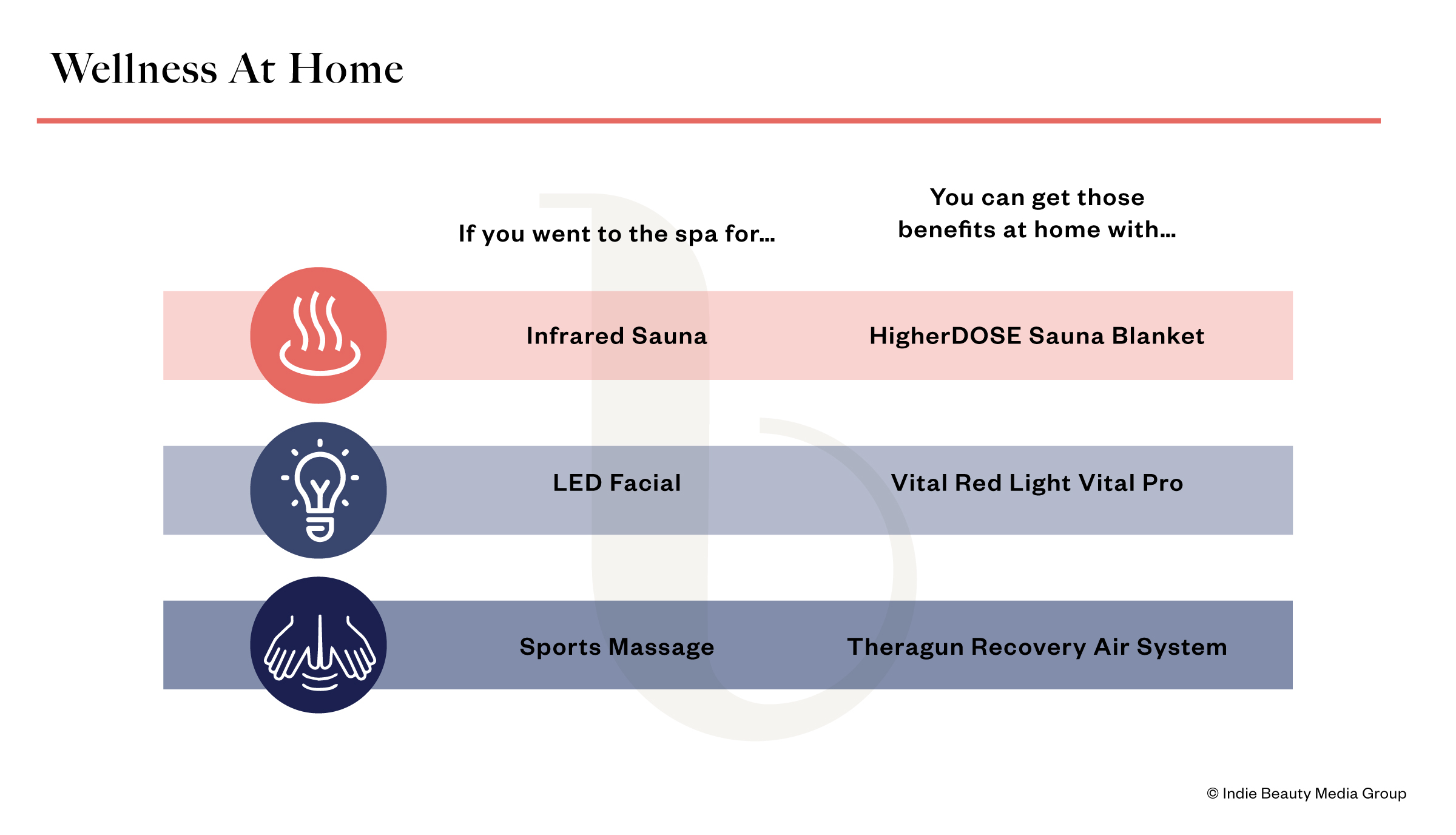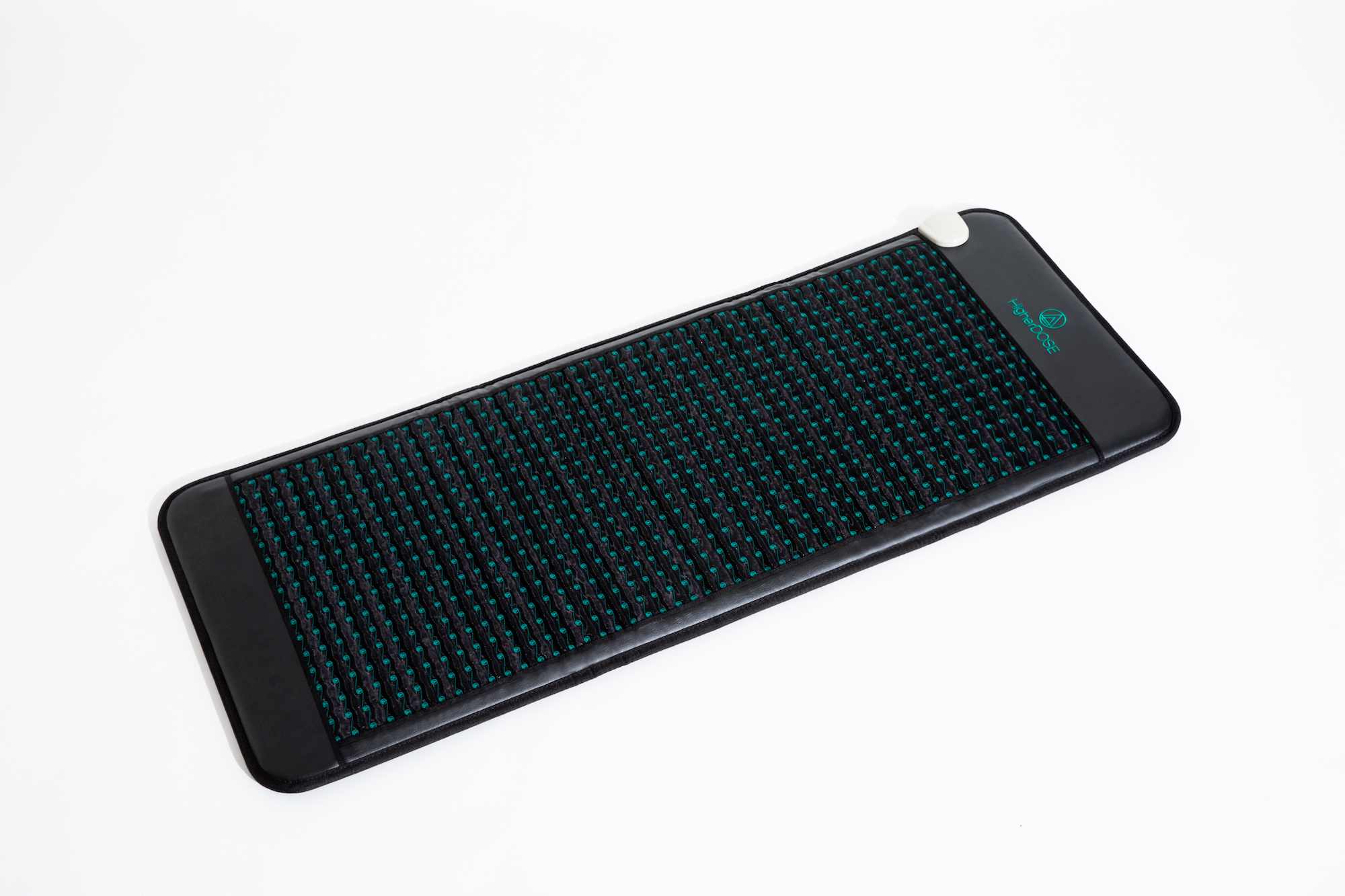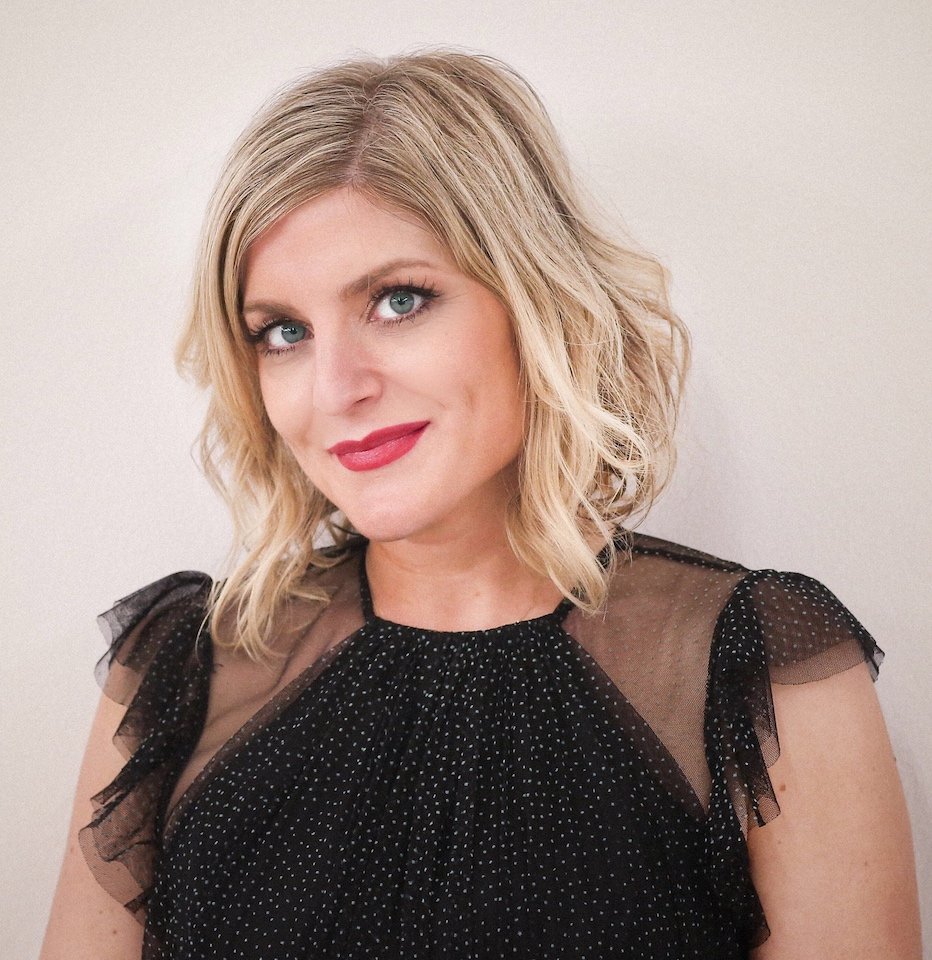
Why At-Home Wellness Centers Are 2022’s Biggest Luxury Must-Have
Sales of at-home beauty devices boomed after the onset of the pandemic as spa and salon closures forced consumers to take beauty upkeep into their own hands.
An equally impressive sales boom that received less fanfare happened in the wellness device category. Items like infrared sauna blankets, red-light therapy lamps, water filtration systems, compression boots and vibration tables were enthusiastically scooped up by people wanting to bring healing treatments in-house and transform their dwellings—which, for many people, contain their offices, undoubtably sources of stress—into wellness oases.
Exactly what does a fully loaded at-home wellness center look like? Jake Kreuz’s set-up boasts an infrared sauna, 5-foot by 3.5-foot cold-plunge tub filled with 41-degree water, red-light lamp for photobiomodulation, and vibration plate. He jumps into the tub for five minutes daily shortly after he wakes up and shifts from there to the sauna. This mix of heat and cold in quick succession is called contrast therapy.
“There’s awesome science coming out on benefits of cold exposure first thing in the morning and how it influences our neurochemistry,” enthuses Kreuz. The vibration plate, he continues, is for moving fluid around his body. He says, “It’s breaking up the soreness, the stiffness in your joints, inflammation, swelling. It’s pretty much shaking you up, and you get off and everything feels lighter.” He adds that a rebounder, or trampoline, can offer some of these benefits at a much lower price point—a few hundred as opposed to a few thousand dollars.
In total, Kreuz’s extensive set-up would cost at least $20,000 to recreate. Ed Hodge, partner at sauna blanket maker MiHigh, would add a fully-loaded gym to his ideal home wellness center outfit. Make it $30,000.
A biohacking neophyte may find Kreuz’s regime excessive, but he’s deep in the wellness game. The former investment banker is the founder of Vital Red Light, a company that makes light therapy devices. Currently, it offers three models—a handheld, a table top and a full-body floor light—priced from $329 to $1,129. Kreuz launched the company direct-to-consumer in early 2020 just before the coronavirus hit the United States. It was a runaway success out of the gate, achieving 850% growth from 2020 to 2021 and 239% month-over-month growth in the fourth quarter of last year.

NASA developed red-light therapy devices in the 1980s. The lamps emit the same red and near-infrared light that’s naturally emitted by the sun. According to Vital Red Light, the red light has a healing effect on the body, including muscle recovery and reduced pain and inflammation.
Kreuz says that many people are introduced to red light therapy because of its beauty, specifically skincare and collagen-boosting, benefits, but adds that those only count for about 20% of the benefits that red light provides. He instructs, “Red light therapy has whole body benefits because when you shine a red light on a certain part of your body, whether it’s your face, neck, stomach, limb, it’s helping the cellular health. The light is being used by our body as a source of energy. It’s helping cells repair recover and grow.”
Kreuz also believes the benefits and the healthy habits that can be accumulated around the passive act of red light therapy are exactly what consumers are seeking right now. “We want people to have a morning routine that is consistent and that can integrate modalities like red light to build a foundation for the day,” he says.
Red light can be used at any time of the day, even at night. “Working from home, the lines have blurred between work hours and relax hours. It’s very hard for people to wind down, disconnect from work and get really refreshing sleep,” says Kreuz. “We want people to use the light in the morning strategically to start the day for energy, but also in the evening to help wind down, disconnect, and reduce the blue light exposure that we’re getting from our phones and screens.”
Some city folks may have the disposable income to purchase a $2,500 (or more) infrared sauna unit like Kreuz has, but not the square footage to house it. New York City entrepreneurs Lauren Berlingeri and Katie Kaps, the duo behind beloved 6-year-old wellness company HigherDose, which sells a $6,000 full-spectrum infrared sauna among several other health devices, saw this white space in urban markets and created HigherDose’s $499 infrared sauna blanket to make infrared available to more people, especially apartment dwellers. Once used, the blanket can be folded up and stored discreetly in a closet.
The blanket launched in 2019 and quickly became a top stockkeeping unit for the company, selling out five times. HigherDose also offers in-person sauna and lymphatic drainage body services at its flagship Brooklyn location as well as partner locations like SoHo hotel 11 Howard. Next, the co-founders will lean fully into educational content creation with their upcoming YouTube series, Biohack-Hers.

Prior to the pandemic, HigherDose’s service business was growing at a 25% clip. When COVID spread, service providers shuttered and at-home wellness became a top priority. Berlingeri and Kaps deftly pivoted to a product-first model. Almost immediately, sales for HigherDose’s sauna blanket grew 400%. Next, the brand launched the $995 Infrared PEMF Mat in October 2020, which has sold out twice, and the $499 Infrared PEMF Go Mat in May last year.
Kaps and Berlingeri were interested in creating a different user experience with the PEMF mat. Specifically, they were attempting to stave off intense sweating of the sauna blanket while maintaining the infrared benefits. The PEMF mat is focused on restful recovery, and is a spot to meditate, stretch and even watch television. Kaps says PEMF or pulse electromagnetic frequency is a frequency similar to that of the earth’s core.
“The PEMF technology is very grounding and calming,” she says. “It increases blood flow and circulation, calms the nervous system down and puts your body into a parasympathetic state, which is rest and digest. Then, we added 25 pounds of crystal therapy, which emits negative ions.”
HigherDose’s latest launch is the $299 Red Light Face Mask, which debuted in October. Kaps reports that customers like to “stack” the face mask with the sauna blanket, using both at the same time and taking selfies. “Even before COVID hit, people realized that this is a lifestyle, it’s not just a one-off thing,” says Berlingeri. “You don’t just do an infrared sauna or an infrared sauna blanket once and you’re good. It’s a cumulative effect, the more you do it, the more results you’re going to get, the more you feel good. It’s the ultimate recovery tool. We did start to see this before the pandemic hit and then, when the pandemic did hit, it just accelerated.”
Though the investments required for at-home wellness items may cause many consumers sticker shock, wellness founders argue the purchases are economical in the long run. A 30-minute in-person infrared sauna session can cost around $60 or more. At that rate, HigherDose’s sauna blanket pays for itself in about a month if used at least twice a week as recommended. “And it lasts forever,” notes Berlingeri.
For an entry-level at-home wellness protocol, consumers can pick up HigherDose’s $69 Supercharge Copper Body Brush. The copper is intended to elevate the standard dry brush model. On its website, it says the ion-charged copper bristles “create friction with the body, releasing neutralizing ions that are easily absorbed through the skin. This powerful reset grounds you in your natural energy state and promotes relaxation.” It advises incorporating dry brushing as part of a daily detox routine and as a prep step for sauna or PEMF sessions. Kaps says, “We’re encouraging people to not just do one thing, but have these home rituals that deepen the benefits of our wellness tech, and we’re seeing that being successful.”
There are some home wellness practices the hoi polloi can engage in for free. If you can’t afford to purchase a red light therapy device, Kruez encourages everyone to resist the urge to reach for your smart phone upon waking and instead get a few minutes of natural sunlight first thing in the morning.
“If you do that over the course of a week, your energy levels, your happiness, are going to increase tremendously,” he enthuses. “I would love for people to start to understand for themselves how light influences their health. Looking at a screen first thing in the morning, it’s not a natural stimulus for your body. You’re starting your day out on a very shaky foundation.”
A less obvious component of the at-home wellness revolution is water quality improvement equipment. From shower-head attachments that remove heavy metals to produce softer skin and hair like the one from DTC newcomer Jolie, to countertop water filter systems like the cult favorite Berkey, to elaborate whole house water filtration systems, pristine and pH balanced H2O has become an integral element of people’s wellness oases. Arizton Advisory & Intelligence projects the home water filtration market will advance at a compound annual growth rate of 8.5% to reach revenues of over $7 billion by 2026.

Hodge says, “Water quality is massively important. It’s the thing we put into our bodies the most, why not make sure it’s the highest quality possible? Many of us on the team have water filters at home for this reason.”
If Kreuz had his druthers, he’d further elevate his home’s wellness quotient with a Kangen Water system, a filter that’s designed to turn standard issue tap water into super-charged alkaline water. Purported benefits of alkaline water range from full body anti-aging to disease prevention. Kreuz says, “There are a lot of different theories on health and pH levels. One is that disease grows in an acidic state. pH water is alkaline, so it’s raising your body out of the acidic state, which enables the most efficient processes within the body.”
Most Kangen systems are countertop models, each with various bells and whistles, and none of them are cheap. Consumers can expect to spend at least $3,000 to $6,000 for the unit, and will have to spend an additional few hundred dollars every year on filter refills.
Even wellness insiders who boast the most extravagant home wellness centers contend there will always remain a place for spa visits. As innovation puts technology in consumers’ homes that was previously reserved only for spas, so too does innovation allow spas to deliver cutting-edge services previously only available through doctors. Lisa Starr, CEO of spa industry consultancy Wynne Business, points to treatments like hyperbaric oxygen therapy as a premium option that’s migrating from medical settings to wellness service providers.
“But it’s super expensive,” she says. “One unit is probably $60,000, so it’s not something your typical small business owner can afford, but I bet, by 2025, you’ll be seeing more of those in spas. We’ll see the accessibility go up and the prices come down.” Users can expect to pay between $250 and $500 for one hyperbaric oxygen therapy at a non-medical facility.
Hodge agrees that anything still too expensive to have in-house at home will draw consumers into spas, as will beauty-focused treatment that cannot be properly recreated at home. “The wellness center still is a great escape from being at home and we don’t think that will ever lose its place in the market,” he adds.
Now that consumers can execute contrast therapy in the comfort of their own homes, spas are upping the ante by adding on elaborate experiential enhancements. Starr points to destinations like Tokyo’s Sauna Trance, an interactive sensory exhibition that combines contrast bathing with art immersion for physiological, psychological, and even spiritual benefits.
Thanks to the Omicron variant surge, it seems like the COVID realities of time at home and health preoccupations aren’t subsiding anytime soon. However, if the pandemic were to end tomorrow, wellness tech company proprietors are confident the at-home wellness craze won’t fizzle.
“I really do believe that this is just the tipping point of the wellness boom,” says Berlingeri. “People are really waking up to this is the thing to invest into because, without your health, it’s hard to enjoy all the other things in life. This should be a priority.”
Want more on this subject? Check out our In Conversation webinar on At-Home Wellness Centers.
KEY TAKEAWAYS
Innovation has allowed companies to offer at-home versions of previously spa-only quality wellness tech like infrared saunas and red light therapy.
A trend of consumers building out at-home wellness centers started pre-pandemic but has exploded over the past two years as people were stuck at home and overly concerned with their health.
Although the manufacturers of these devices believe they are making this wellness tech available to a wide audience, most items are still at a luxury price point, making them out of reach for many wellness-minded individuals.





Leave a Reply
You must be logged in to post a comment.